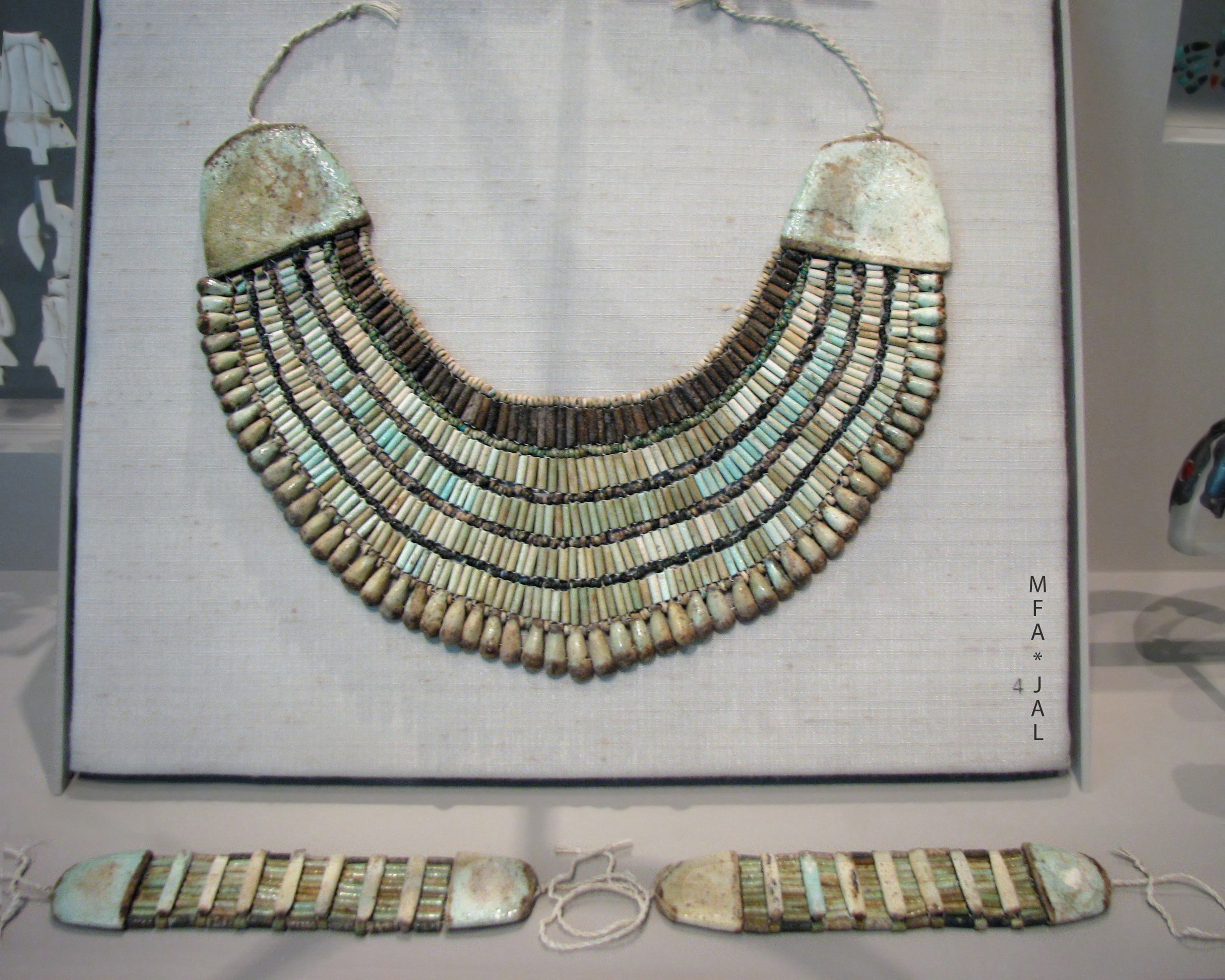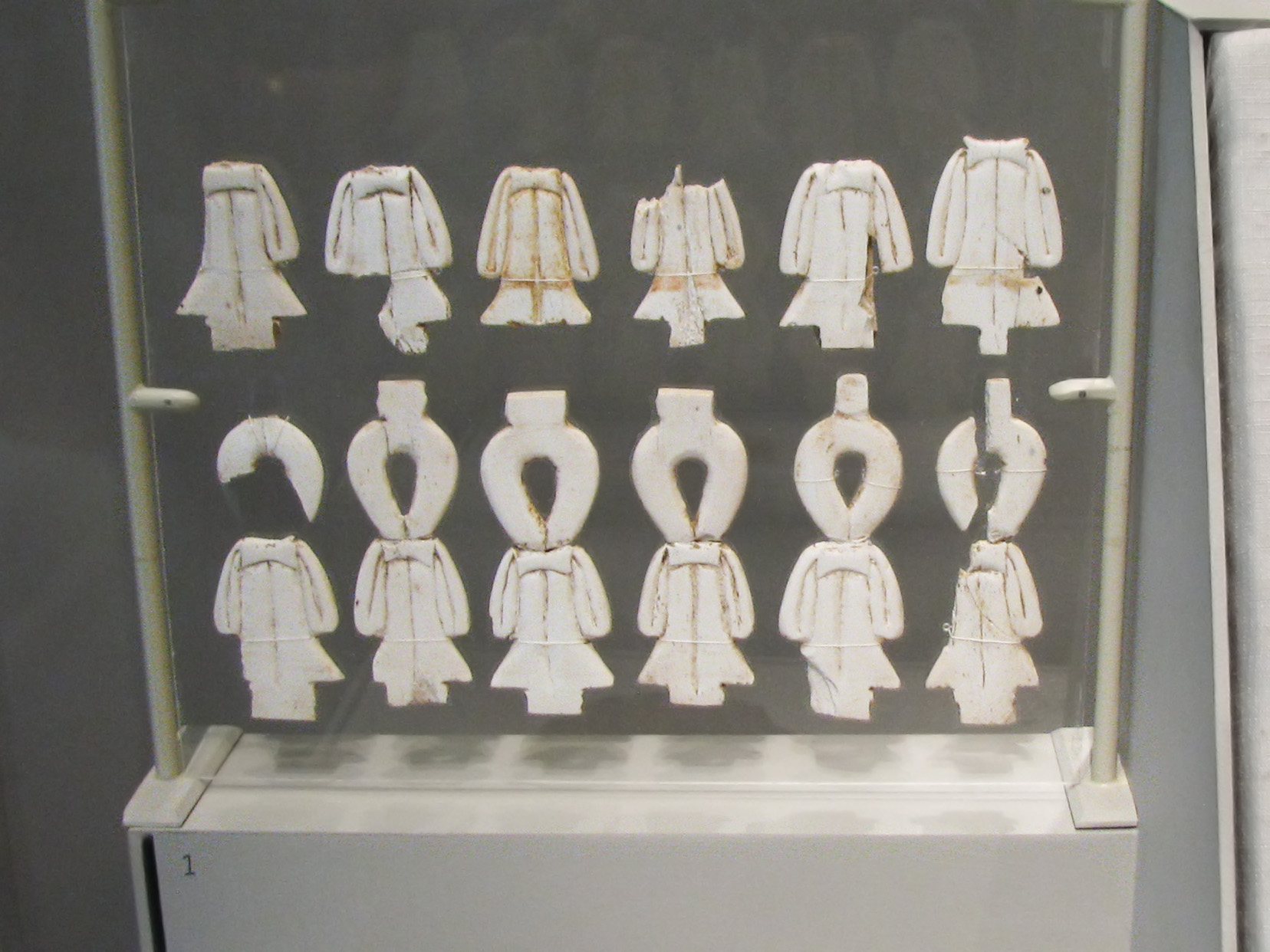
Polychrome Faience, from Giza, tombs G 2422 D, G 2416 D III and G 1102 F
Old Kingdom, Dyn. 5, 2465–2323 B.C.E.
Harvard University—Boston Museum of Fine Arts Expedition 1937
Wesekh broadcollar, MFA #37.1313
H x W x D: 19 x 27 x 0.5 cm (7 1/2 x 10 5/8 x 3/16 in.)
Wrist ornaments, MFA #37.1311a-b
H x W x D: 10.8 x 5.2 x 1.2 cm (4 1/4 x 2 1/16 x 1/2 in.)
Photo ©Joan Ann Lansberry, 2014
"The broadcollar was the most common type of Old Kingdom jewelry. At Giza alone, George Reisner found nineteen such collars in tombs of both men and women. In addition, brightly painted broadcollars are represented on statuary and reliefs of deities, royalty, and wealthy private individuals from the Old Kingdom through Roman times. Although jewelry was often made for funerary purposes only, in this case the presence of the counterpoise that served to redistribute the weight of the collar and to ensure that it hung properly suggests that this example was worn in life as well." (From Museum website)



